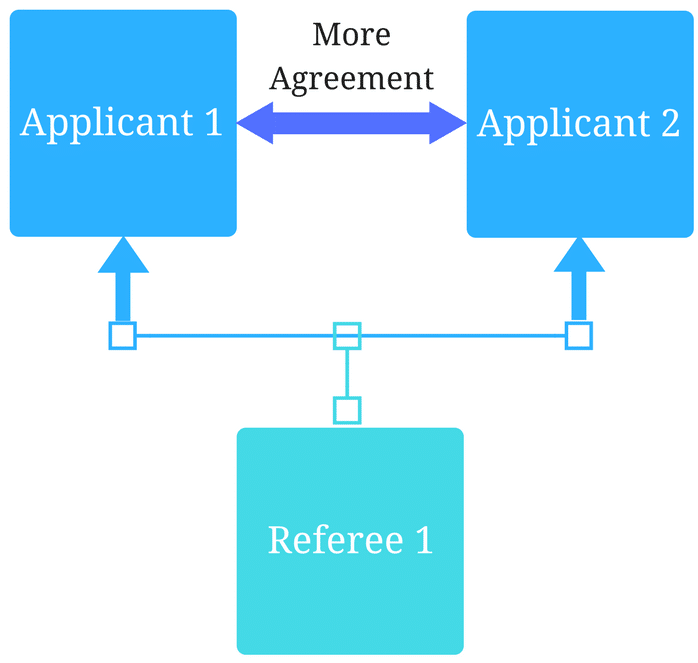How to prepare a new MedEd software implementation for quick value and positive outcomes

July 8, 2021
Implementing any type of software is no small feat. The key to successful implementation is preparation. If you are adequately prepared, you will be rewarded with quick-value wins and positive outcomes. Quick-value wins within your implementation allow you to receive immediate benefits from the software and continue to build on that success. Here are some things I recommend that will help you see that immediate value, as well as maximize the benefits available to you from your vendor.
Have a vision for the future
What are the outcomes you are looking for by the time this project is complete? If you haven’t already done so, it’s a good idea to write a vision statement and share that with anyone at your institution who will be involved in the implementation of the software. This should include your Implementation Specialist/Success Manager and, if possible, the Sales agent before you even purchase the software. Measuring the success of any project starts with knowing the desired outcome and how to benchmark it against your progress.
Carefully select a project leader
Selecting the right project leader (around here we call this role Super Administrators) is an important task that you will want to carefully consider. We have found through experience that the most successful project leaders already know your school’s workflow, or have had previous experience with the type of software being implemented. Mistakes made due to lack of knowledge by a project leader can have a significant impact on your system setup, and therefore, may delay or stagnate your progress towards successful adoption of the software.
When considering who to select as your project leader, we have found it beneficial for the project leader to be someone who:
- can gather the team and delegate tasks to complete
- is well organized
- is comfortable escalating decisions to superiors when actions are required
- can see the overall big picture and the details needed to work towards it
- Is relatively tech savvy
Make sure you have all the right people involved in the implementation
The project leader should look for help from related offices for different pieces of the implementation. Having involvement from leadership who can help with process and policy change is crucial. We have found that in cases when the project leader is not a decision maker, it is useful if the appropriate decision makers can be involved in as many of the relevant implementation calls as possible to ensure early successes with your new software.
Make sure your implementation starts with a plan (and stick to it)
Your first meeting (we call it a kickoff call) with your Implementation Coordinator/Success Manager should be to set up a plan which both parties agree to for the implementation. If your implementation starts with a plan, you should be able to identify clear desired outcomes and set goals for success. The plan should entail the deliverables required from your team to get started, the scope of the project, goals to achieve, and a training schedule with clear and manageable deadlines.
Bonus Tip: Set up a regular cadence of meetings to add to your calendar with your Implementation Coordinator/Success Manager. We find weekly meetings work well to ensure the implementation is continuously progressing.
Schedule time into your calendar for training and data entry
In conjunction with weekly check-ins and training calls with your Implementation Coordinator/Success Manager, it is key to schedule time into your calendar when you can work on data entry in the new software and put into practice what you have reviewed in your training sessions. There can be a learning curve when it comes to adopting new software, and completing tasks directly after learning them can increase your chance of remembering what you’ve learned. Investing the time during the implementation process will save you time and effort in the future when it comes to getting the information you need.
Provide training and get buy-in from your team
In most cases, purchasing a new software requires training people who were not included on the implementation. Don’t treat team training as an afterthought. If your team feels confident about using the new system, they’ll more readily integrate it into their daily processes. You’re all in it together so don’t go at it alone. Talk to your Implementation Coordinator or Customer Success Manager and find out what they recommend and what resources they have for training others. Questions you can ask them include:
- Can you record your training sessions and share them with your team?
- Are there any existing help resources available?
- Are webinars the most helpful?
- Are there any downloadable materials?
Bonus Tip: With busy schedules, think about what will work best for your institution based on structure, resources, and preferences. Should you offer live training to a group or 1:1? Are there targeted materials you can put together for your team to learn from and keep on hand for reference?
Set yourself up for continuous quality improvement (CQI)
Reaching your implementation goal is a good reason to celebrate, but keep in mind that it is an iterative process. The work doesn’t stop when you have reached your implementation goal. Continue to work with your Customer Success Manager (CSM) to build on your current processes and system knowledge. Your CSM is there to support your long-term goals even as they change and as new features and capabilities are added to the software. Be sure to participate in discussions, and bring ideas and current challenges to your CSM, who can work with you to find the right solution for you. Your CSM may also ask you to participate in product discovery and new product developments, which can help your vendor take your opinion into consideration when building new solutions that work for you and your institution.
Conclusion
Over my many years partnering with medical schools to implement MedEd software, I have learned that success starts with a vision for your institution. Software isn’t static. Over the long run, collaborating with both your internal team and us as your vendor and service partners means we work together to ensure you’re getting the most from the software. To truly bring the vision to life and nail the implementation progress, you must have the right people involved and the right investment of time and effort. Success doesn’t stop after the initial investment. Our most successful customer relationships are ones that look to grow and nurture workflows, ensure continuous user adoption, and work with the tools available in order to continue to accomplish goals as they evolve over time. With the vision for success as the guide, it’s easy to achieve that vision with the implementation first, and then continue working together on new features and capabilities that suit your needs and help maintain that vision for success over the long run.
Related Articles

How interviews could be misleading your admissions...
Most schools consider the interview an important portion of their admissions process, hence a considerable…
Reference letters in academic admissions: useful o...
Because of the lack of innovation, there are often few opportunities to examine current legacy…
